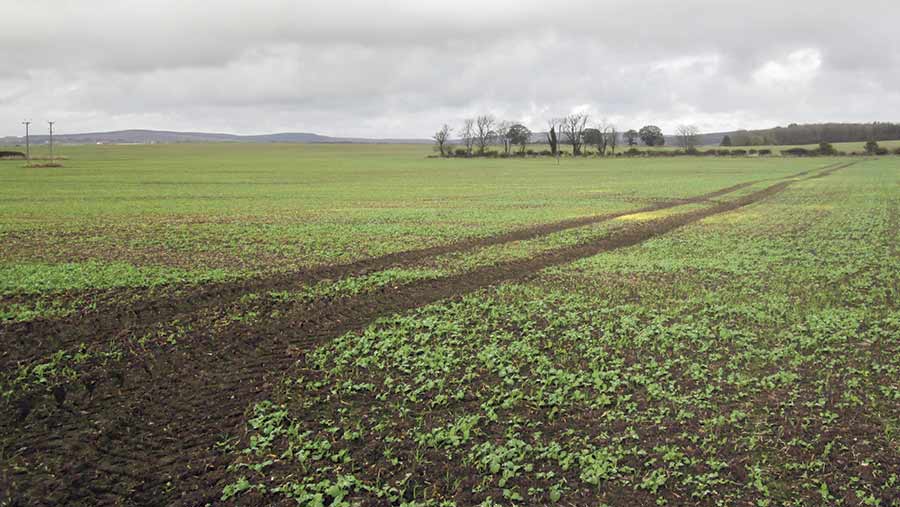Commercial arable land values fall to 2012 levels

Average arable land values in England and Wales have slipped back to 2012 levels as a market correction in the eastern counties continues.
Carter Jonas says data from its transactions shows arable values at £8,967/acre – about 8% down on the same period last year.
Strutt & Parker says its database shows arable values have fallen by about 6% on 2016 levels but adds that there are signs of prices beginning to firm up.
See also: Farmland buyers: who are they and what do they look for?
But in counties where supply is limited or investors and lifestyle buyers are more active, prices are holding firm.
Drop in average values
The private nature of farm sales means the data provided by national agents rarely tallies exactly.
But the most recent information published by Carter Jonas, Strutt & Parker and Savills at the end of quarter three, does clearly show a drop in average values across the board.
In most cases, this is linked to the prices being achieved for purely commercial land.
This is most obvious in counties such as Lincolnshire, Cambridgeshire, Norfolk and Suffolk, which appeal predominantly, but not exclusively, to farmer buyers.
Brexit caution
With farm profitability continuing to pose challenges and Brexit negotiations providing no clarity for agricultural businesses, agents say farmers are being cautious.
This is not only being reflected in prices being paid, but in the increasing length of time it is taking to sell farms.
Meanwhile, across the Midlands where rollover buyers are very active, and in the North and South West where supply is limited and lifestyle buyers are in play, prices appear to be holding up.
Drop in arable heartlands
Carter Jonas says the overall fall in arable values can be attributed to a drop in the main arable heartlands of England.
Andrew Fallows, head of the rural agency, assigns blame to the ongoing economic uncertainty, which he says has affected the state of the market in the past year.
“I think we have seen a correction in the eastern regions, which is pulling national averages down, but if you look at the traditional hotpots of Hampshire, Oxfordshire and parts of the Midlands and South West, strong prices are being reported.
“When you get closer to settlements investors become interested and are looking for something else in the deal – land with development potential or a barn conversion.
“What is clear is that land for straight agriculture is less attractive.”
Giles Allen, a partner at Strutt and Parker, says: “Prices have steadied in the past six months but over the past two years there has been a fall in arable land values in the eastern counties.
“The market sense is that things have levelled out recently and that’s partly because there has been a tightening of supply.
“A lot of land for sale has been purely commercial and doesn’t have amenity or development.
“Farms with clay loams in the Fens, for example, have very limited appeal at the moment.”
Hot demand in Northumberland
In Northumberland, Tim Michie, a senior surveyor with George F White, says arable land is in hot demand and prices are holding up.
This year he has sold two bare blocks of arable land – both in excess of 550 acres – and has a number of off-market deals nearing completion, including another 220 acres.
“Supply is traditionally quite tight in Northumberland so the appetite for arable land is really for the bigger blocks, which appeal to the farms with big machinery to get around it,” Mr Michie says.
“We certainly haven’t seen a drop in arable values or demand. We didn’t need to go near the market with the first farm we sold and on the second farm we had a successful bid within four days of it being launched.”
Berry’s chartered surveyor Charlotte Rogerson says that in the West Midlands she has not seen evidence that farmland values have dropped significantly.
“It is evident that purchasers are being more cautious, but the market is very polarised, which shows that the extremities of the market are more than likely distorting the average evidence that has been provided.”
In Wales, Savills associate director Dan Rees says farmers are still active but face increasing competition from those seeking a lifestyle package or investment returns.
“Average values dipped by 2% from the previous quarter to £5,350/acre and remain depressed compared with last year, down 3.5% from December 2016 across all land types,” he says.
